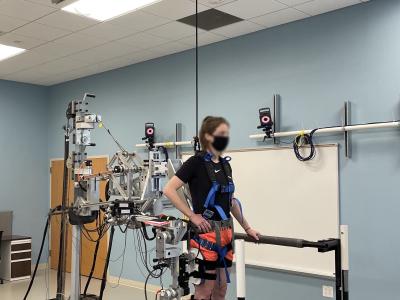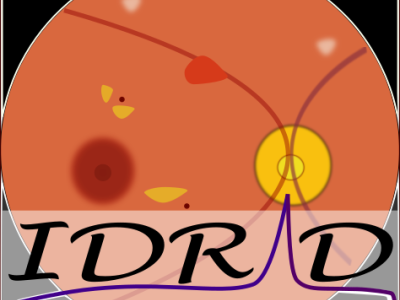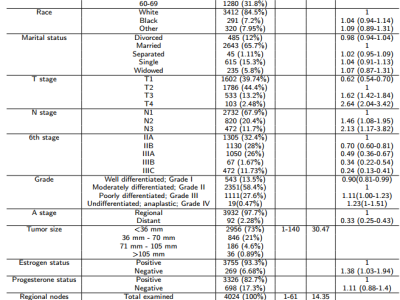Robot-Aided Training of Propulsion: Effects of Torque Pulses Applied to the Hip and Knee Joint Under User-Driven Treadmill Control

- Citation Author(s):
-
Robert L McGrath (University of Delaware)Fabrizio Sergi (University of Delaware)
- Submitted by:
- Fabrizio Sergi
- Last updated:
- DOI:
- 10.21227/evpq-b758
 100 views
100 views
- Categories:
- Keywords:
Abstract
We sought to establish whether torque pulses applied by an exoskeleton to the hip and knee joint modulate propulsion mechanics and whether changes in propulsion mechanics would be sustained after exposure to torque pulses under user-driven treadmill control. We applied twelve different formulations of torque pulses consecutively over 300 strides to 24 healthy participants, and quantified the evolution of four outcome measures -- gait speed (GS), hip extension (HE), trailing limb angle (TLA), normalized propulsive impulse (NPI) -- before, during, and immediately after training. We tested whether the pulse conditions modulated propulsion mechanics during and after training relative to baseline.
Metrics of propulsion mechanics significantly changed both during and after training. After training, HE, NPI, and GS significantly increased in eleven conditions, three conditions, and four conditions, respectively.
Increases in HE during and after training were observed in conjunction with hip/knee flexion pulses during early stance, or hip/knee extension during late stance. Increases in NPI during training were associated with hip/knee extension during early stance, or knee flexion during late stance. Knee flexion during early stance resulted in positive after-effects in NPI. Increases in GS were associated with the application of hip flexion pulses.
Conditions exhibiting the largest positive changes in HE, and not NPI, during training resulted in increased GS after training. Analysis of the relationship between the effects measured during and after training suggests that, when present, after-effects arise from retention of training effects, and that retention is specific to the component of propulsion mechanics affected by training.
Instructions:
The data is contained in an 880x10 matrix held in DATA.mat.
In this experiment, 22 subjects walked while interacting with a hip/knee exoskeleton. Subjects were exposed to a combination of torque condition, for a maximum of 8 conditions per subject (indicated by column 1). We measured propulsion mechanics (columns 7-10) at different time points over a 10-15 minute experiment. Outcomes are averaged at different time points as indicated by column 3. After 100-150 strides of baseline, the exoskeleton applied pulses of torque (categorized by the ID values included in column 2) continuously for 300 strides, and then was again in transparency mode for 200 strides. Information about the parameters of the pulses of torque is provided in columns 4-6, and used for some of the analyses in the paper.
Column Definitions
1: Subject # (1-22)
2: Pulse ID (3, 4, 5, 6, 7, 8, 11, 12, 23, 14, 15, 16)
3: Time Point (1 Baseline, 2 Pulse-Early, 3 Pulse Late, 4 After-effects Early, 5 After-effects Late)
4: Phase of Gait Cycle (10 Early Stance, 45 Late Stance]
5: Knee Torque (-10, 0, 10 Nm)
6: Hip Torque (-15, 15 Nm)
7: Hip Extension of the Right Leg (deg)
8: Trailing Limb Angle of the Right Leg (deg)
9: Normalized Propulsive Impulse of the Right Leg (ms)
10: Gait Speed (m/s)






